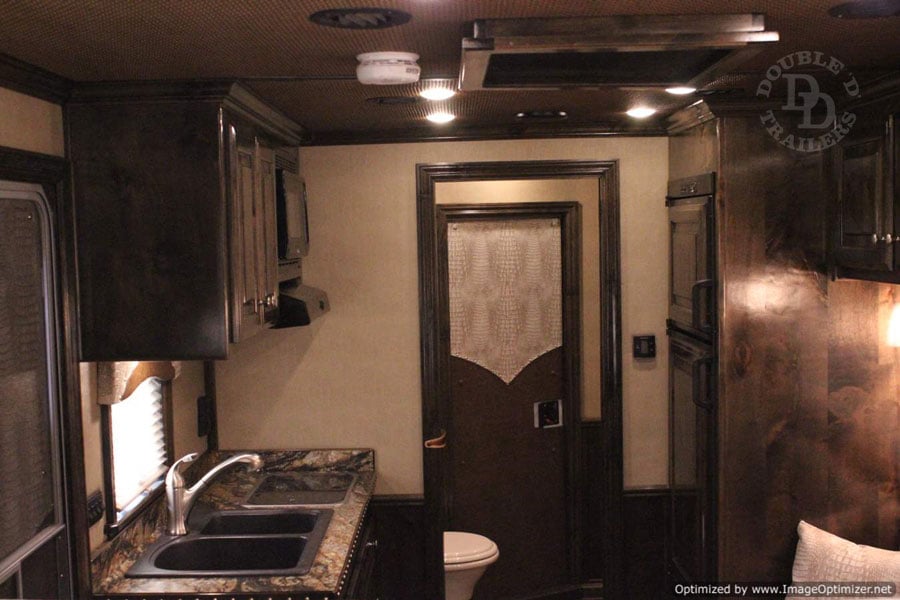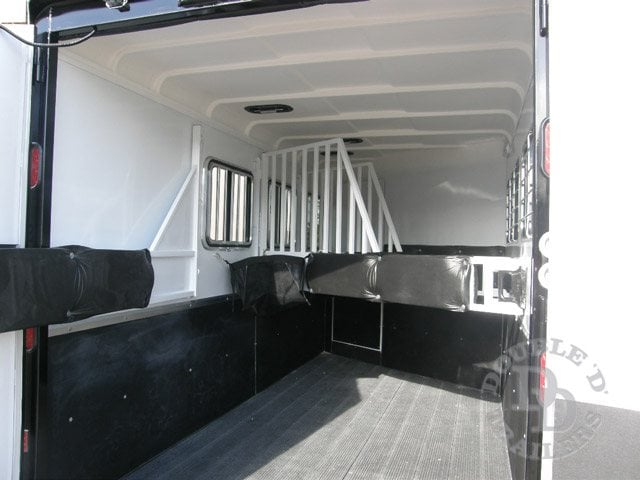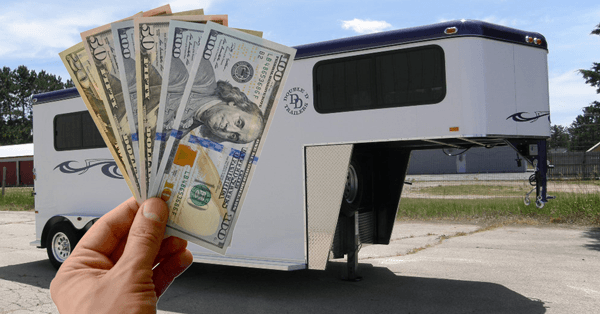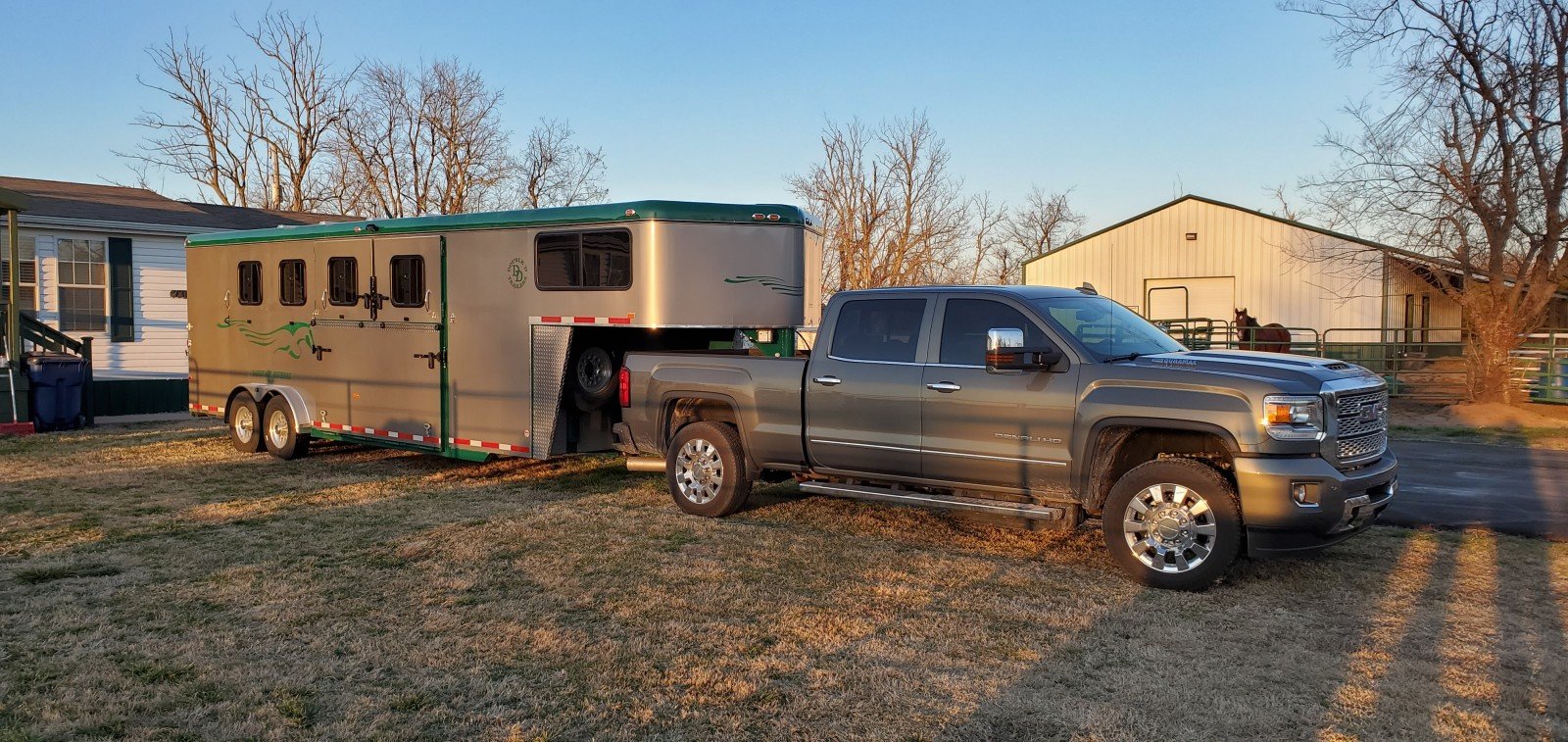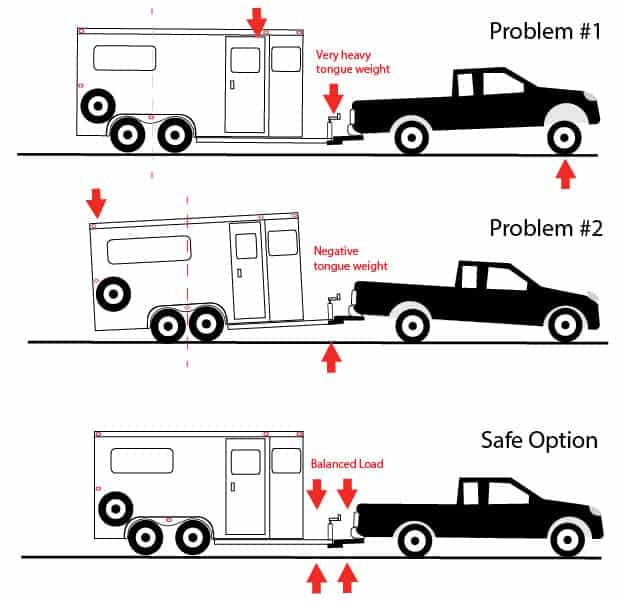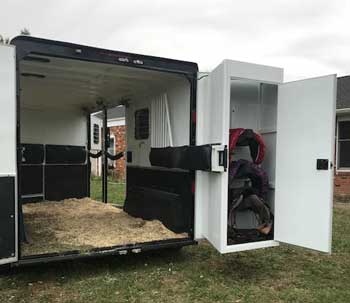Gooseneck vs. Bumper Pull Horse Trailers: Quick Steps to Find the Best Trailer for You
When it comes to a gooseneck vs. bumper pull trailer, which is better? Well, that question is simple to ask but a little more complicated to answer.
That’s because the right answer is going to depend on your particular situation.
In this article, we’re going to break down the gooseneck vs. bumper pull topic point-by-point. To make the ultimate decision between choosing a gooseneck vs. bumper pull horse trailer, you’ll need to answer a few questions about what you’ll want and need in a horse trailer.
Question #1: How many horses are you planning to tow?
Let’s start simple. How many horses are you planning to tow?
If you want to haul 1-3 horses, then you will be fine in either a gooseneck or a bumper pull trailer. However, if you have 4 or more horses, we recommend a gooseneck horse trailer without question.
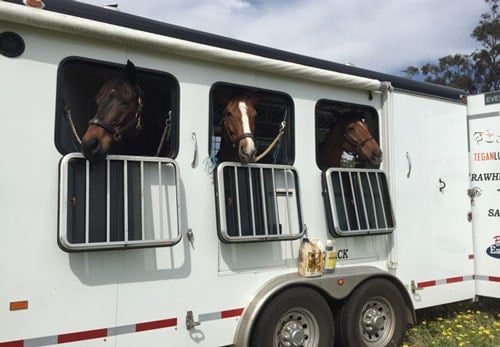
Question #2: Do you want to sleep in your trailer?
Camping or attending weekend events is a ton of fun, but you should think about where you plan to sleep once the sun sets. If you want a mattress to get a good night's rest (or, a quick show day nap), then a gooseneck horse trailer is best. Many people choose to put a mattress in the gooseneck area for comfortable sleeping.
There are a few bumper pull trailers, like our one-horse living quarters trailer, that have sleeping quarters in the front, but this is not common. You’d be much better off packing a tent and some blow up air mattresses.
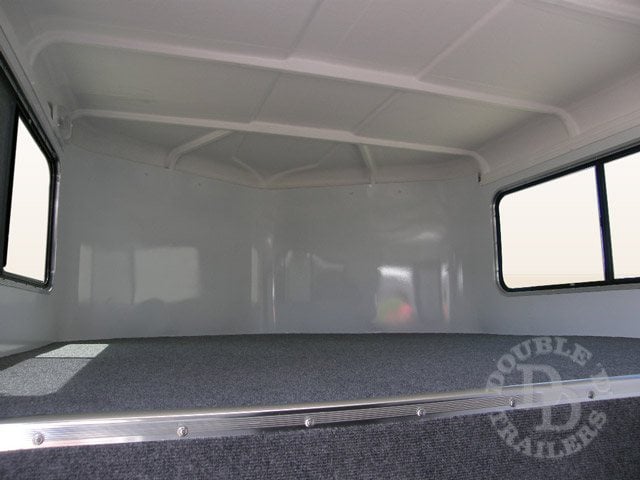
Question #3: Do you want full living quarters?
A dressing room with a mattress is great, but some folks want a full living quarters in their horse trailer. This means it would also include a small kitchen area and bath room. We do offer a one-horse living quarters trailer which works as a bumper pull.
(Having just one horse to load means we can accurately predict the weight distribution and avoid a trailer with too heavy of a tongue weight as described below.)
However, if you have more than one horse, a living quarters is definitely best in a gooseneck horse trailer. Most bumper pull horse trailers with living quarters are extremely unsafe because the front of the trailer becomes too heavy for safe towing. Unfortunately, that doesn’t stop many trailer manufacturers from making these models.
Question #4: Do you need independent access to the horse stalls?
One of the most frustrating things about a conventional slant load trailer is that you have limited access to your horses. This becomes especially important in the case of a roadside emergency. If your horse in the front stall is in distress, you’d have to offload the horses behind him in order to give him aid.
This problem can easily be avoided with a second doorway on the side of the trailer. On a three horse trailer, a double wide side ramp and door would have access to all three horses independent of the others. Or, on a two horse slant load, a single wide ramp and door would work.
There’s just one consideration… a double wide side ramp and door cannot be installed on a bumper pull trailer because of the location of the axles.
So, if you want a three horse trailer with individual access, you’d have to go with a gooseneck trailer.
Question #5: What’s your horse trailer budget?
A large deciding factor when making the decision between investing in a gooseneck vs. bumper pull for a lot of people comes down to their budget. Because gooseneck horse trailers are larger and require more materials to produce, they do cost more. If cost alone is your primary concern, then a bumper pull horse trailer will be more cost friendly. For example, the Double D Trailers 2 Horse Slant Load Gooseneck model starts out at $37,000, while the 2 Horse Slant Load Bumper Pull model starts out at $31,000.
Frequently Asked Questions About Gooseneck vs. Bumper Pull Horse Trailers
What is easier to drive, a gooseneck or bumper pull?
A lot of people considering gooseneck vs. bumper pull trailers lean toward bumper pulls when it comes to ease of driving. People who are brand new to horse trailers tend to think that bumper pull horse trailers would be easier to drive. They see these trailers as a quick “hitch ‘n go” option. But actually, they are not that much different when it comes to driving.
Brad Heath, owner of Double D Trailers, says, “Bumper pulls are a little easier to back up than a gooseneck, but moving in the forward direction there isn't a noticeable difference in maneuverability.”
Which trailer is safer: gooseneck vs. bumper pull?
This really is the million dollar question… and it all comes down to a proper tow vehicle.
As we mentioned, a lot of folks newer to hauling tend to think a bumper pull horse trailer is safer and easier to tow. Brad says, “I have no problem recommending a bumper pull providing it’s towed by an adequately equipped tow vehicle.”
That second part is the key…
Many people are towing with vehicles that are underrated for their particular trailer. Part of this problem stems from the truck dealers who like to brag about trailer’s towing capacity to make a sale. These dealers know how to read the sales specs on a vehicle, but don’t understand the importance of tongue weight in towing safety.
We have complete articles about tongue weight and how to choose the right tow vehicle for your trailer. But here’s the brief version…
Your truck will need a certain amount of power to pull your trailer. But it also needs to carry the tongue weight of the trailer pushing down on the rear end of the truck. If your truck’s tongue weight capacity or hitch capacity is under-rated for your trailer, it’s an accident waiting to happen.
Here’s an example: One of our clients is buying a 2 horse bumper pull Safetack Reverse trailer. They’re hauling warmblood horses. The trailer weighs 5,100 lbs. and the tongue weight is 1,100 lbs.
They were looking to purchase a 2022 Yukon Denali truck which is rated to tow 8,500 lbs. Even with two horses at 2,000 lbs. each, this truck seems like it would be up to the task. Right?
Wrong! The tongue weight rating on this newer model truck is only 850 lbs.
So, we’re trying to tow a trailer with a tongue weight of 1,100 lbs. with a truck that can only handle 850 lbs. See the problem? When trucks are mismatched to their trailers like this, you are more likely to see accidents on the road.
To fix this problem, they would either need to find a different model truck, look for a higher rated hitch, or consider adding a weight distribution hitch so the truck can handle the tongue weight.
Definitely do not rely on the word of your car dealer as they do not understand the safety concerns associated with hauling live animals in a trailer. (Remember, live animals move around so hauling them is different than hauling something fixed like a boat or an RV.)
People who tow with gooseneck horse trailers need to have a pickup truck with a hitch located in the bed of the truck. The towing capacity numbers are still important to consider, but it seems to be less of a problem with gooseneck trailers and drivers.
So, the short answer is this… Either type of trailer is safe to haul. Just make sure you are buying a properly equipped tow vehicle to carry the weight and tongue weight of your trailer.
Which trailer is more popular: gooseneck vs. bumper pull?
Here at Double D Trailers, we were surprised to find 64% of sales were for bumper pulls and 36% for gooseneck horse trailers over the last twelve months. We also found that about 60% of our sales overall were for the Safetack Reverse horse trailer (available as either a bumper pull or gooseneck.)
This model is very popular because it allows you to load your horse in the rear facing direction. Some buyers even opt for a side loading door and ramp which allows for a walk-on-walk-off configuration. You would never need to back your horse to load or unload.
Unlike many conventional slant load trailers, the Safetack Reverse has a rear tack storage area that swings out like a second door. This results in a very open and non-threatening space for your horse to load. Plus, studies have shown that traveling in the rear facing direction reduces stress in your horse and makes it easier for them to balance. Horses tend to get off these trailers with less fatigue.
If you’d like to learn more about our Safetack Reverse trailers, or if you have other questions related to gooseneck vs. bumper pull trailers, ask Brad here.

